The Last Frontier. Alaska in autumn was spectacular – breathtaking glaciers, plentiful wildlife and colorful views around every corner. Different seasons brings different experiences, but Alaska always has something to offer. Using Anchorage as a hub, I explored as far South as Katmai National Park and as far North as Denali National Park, yet still only skimmed the surface of Alaska’s wonders. If you are considering visiting the broader Anchorage area and are willing to drive for a few hours in any direction, adventure awaits.
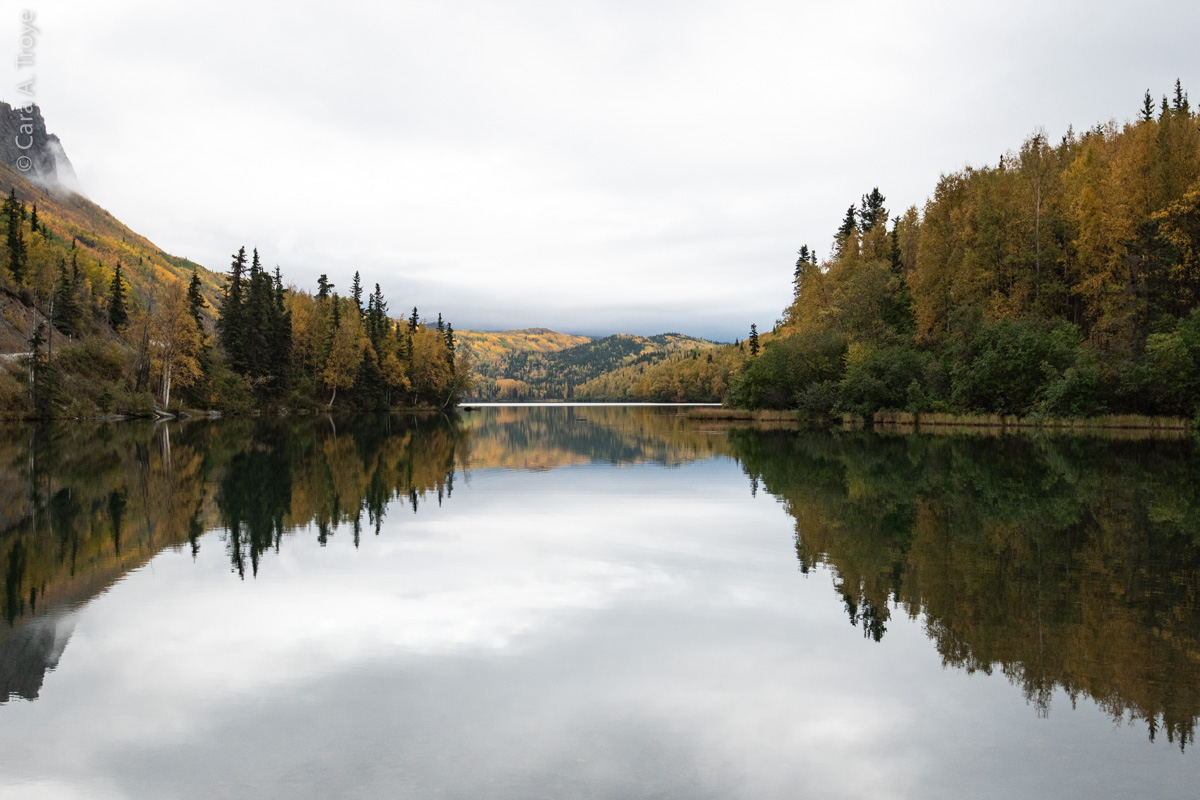
Long Lake
Glaciers – Whether your preference is a drive-by experience or walking onto an ice field, Alaska has you covered. Matanuska Glacier is over four miles wide and it can easily be seen from the highway towards Palmer. Close to Seward, you can also visit Exit Glacier by way of a short hike. Here, you can see first-hand how the glacier has recessed over the years because there are date markers to indicate where the glacial edge has been, compared to where it is today. A slightly longer and more intense trail at Exit Glacier takes you to Harding Icefield for even closer viewing.
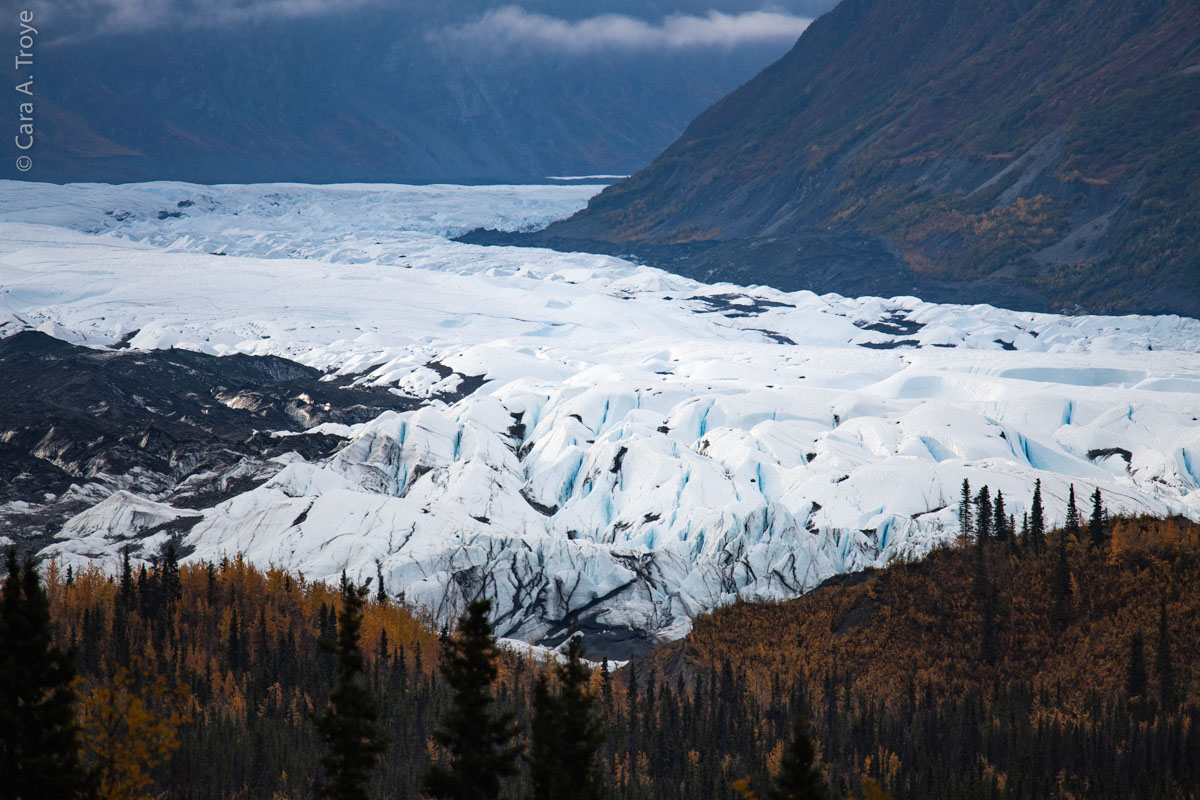
Matanuska Glacier Toward Palmer
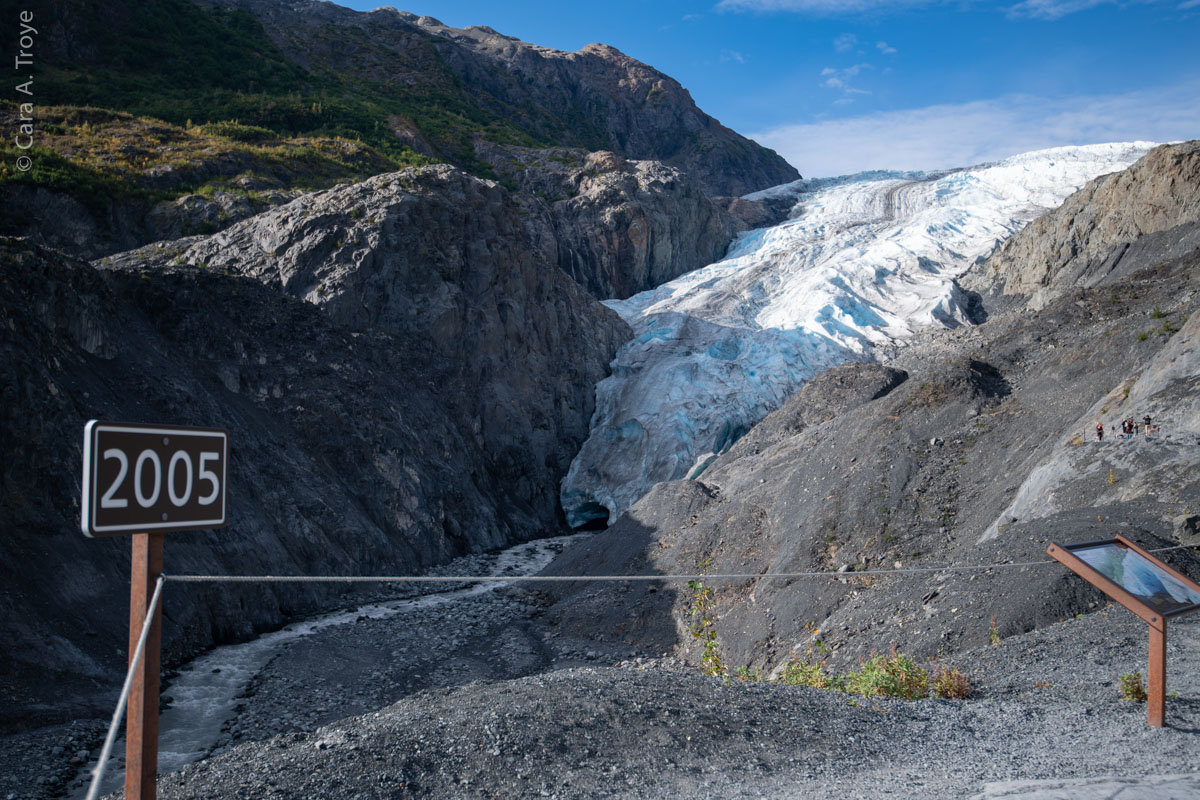
Exit Glacier’s base (as of 2018)
Wildlife – You never know what kind of wildlife you will see in Alaska, but chances are, you will spot a bald eagle. Homer is a fantastic place to look, particularly near the Homer Spit which is a narrow piece of land that stretches into Kachemak Bay. Look on top of the tall light posts in the harbor, especially. Depending on the season of your visit, there are also opportunities to see puffins, waterfowl, whales, seals, sea lions and porpoises at the bay.
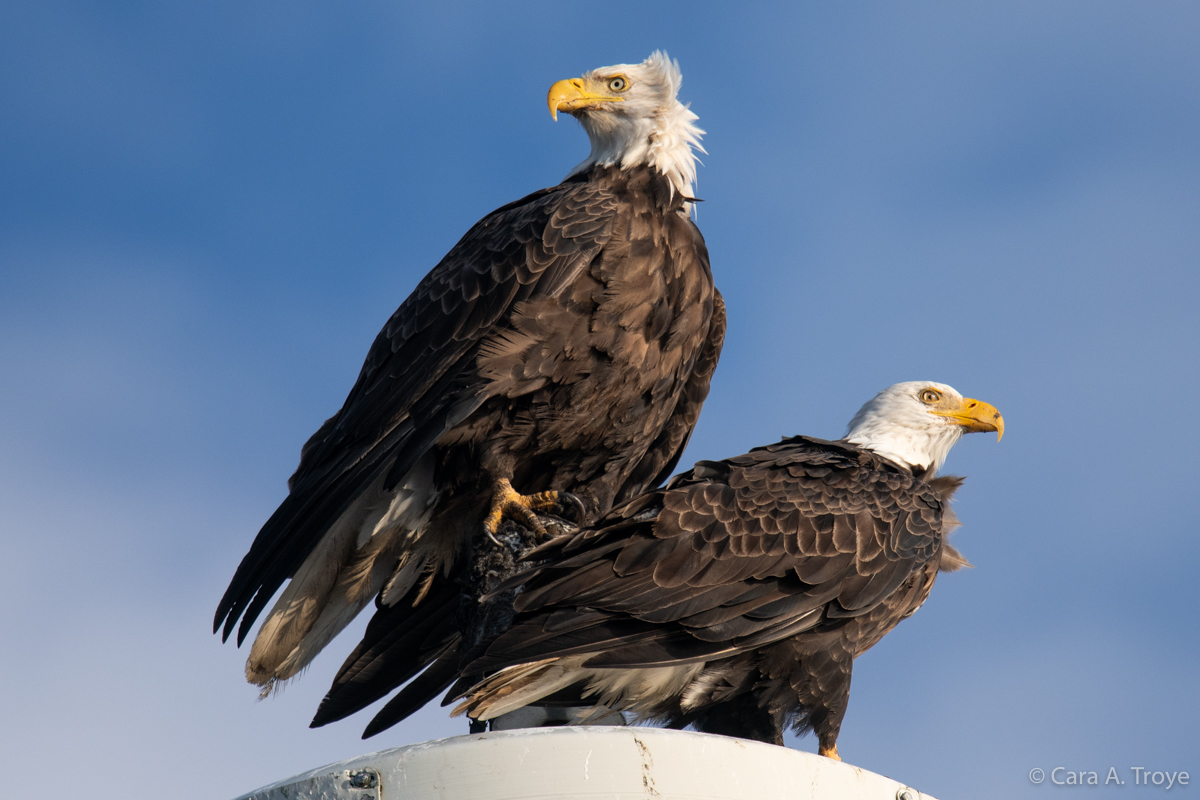
Bald Eagles at Homer Spit
Trekking – There are plenty of bears throughout Alaska, so it is possible to cross paths at any time, but there are also some unique seasonal opportunities in the national parks to photograph bears where they aggregate in large numbers. I took a helicopter into Katmai National Park where well over 2,000 bears inhabit the area. After landing, we trekked in thigh-high wading boots through the thick brush and into the river to get close. It was amazing seeing their large footprints in the mud.

Comparison of a paw print to my foot
Grizzlies are quite observant and their sense of smell is incredible (more than 2,000 times that of humans). This makes them keenly aware of guests. Before hibernation, though, bears expend as little energy as possible, resting between meals, so it is a perfect time to visit. The brown bears in Katmai were busy catching salmon in order to stock up on fat and nutrients before winter.
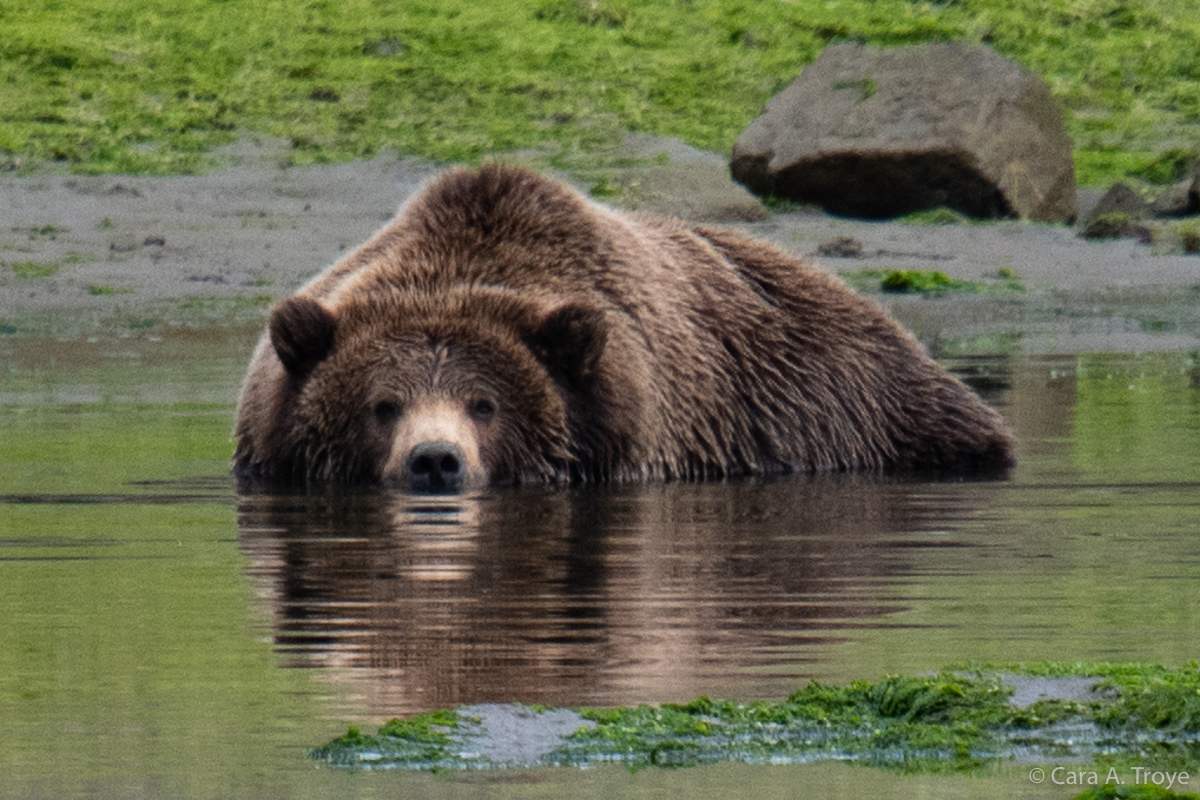
Attentively watching
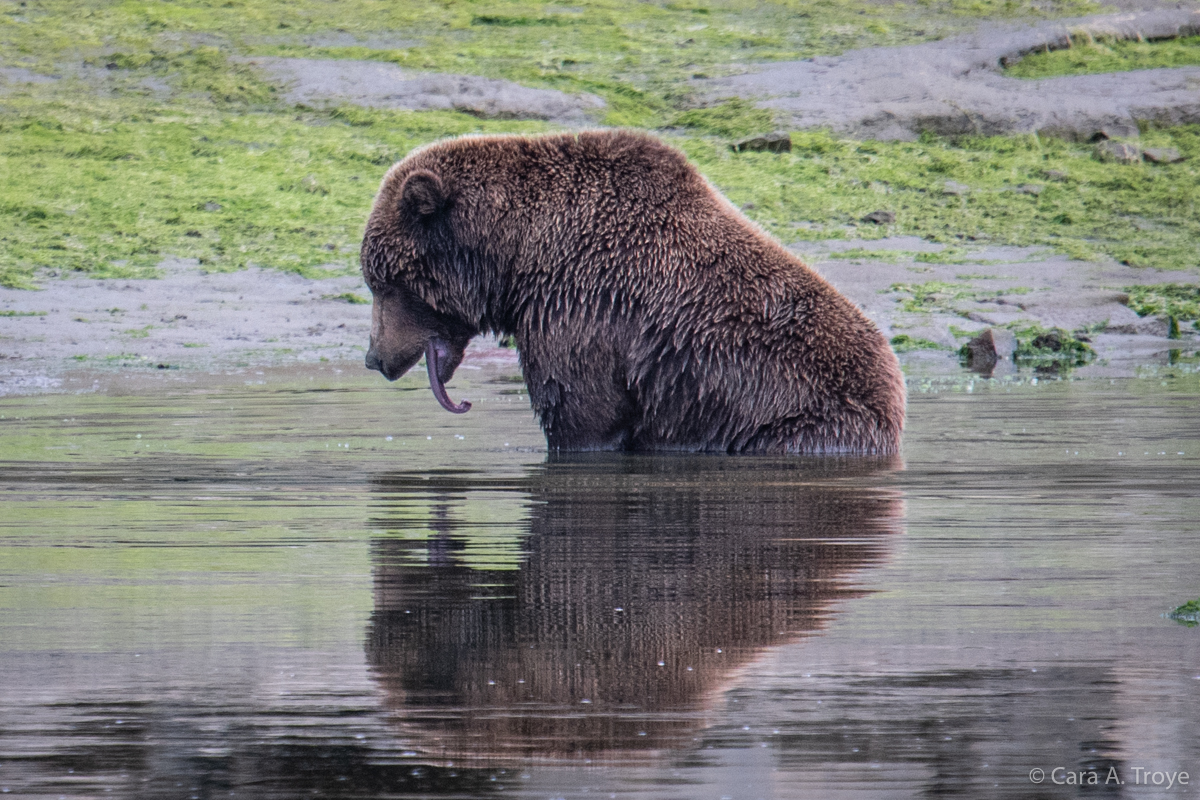
Lazy days
It was quite an experience to watching the bears chase the salmon, actually hearing the salmon bones break as they tear into the meat and learning about how they become selective with such large quantities of fish that they sometimes eat only the egg sac with the roe.
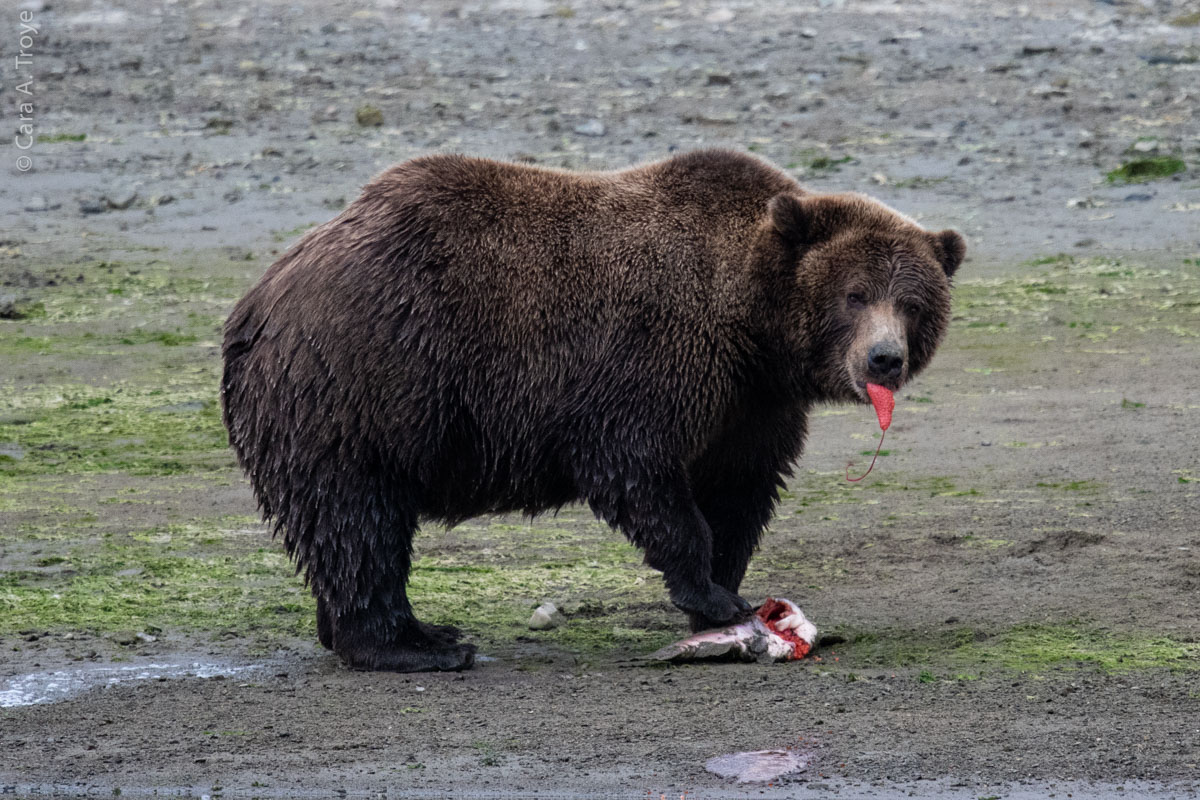
Selective eating: just the salmon egg sac
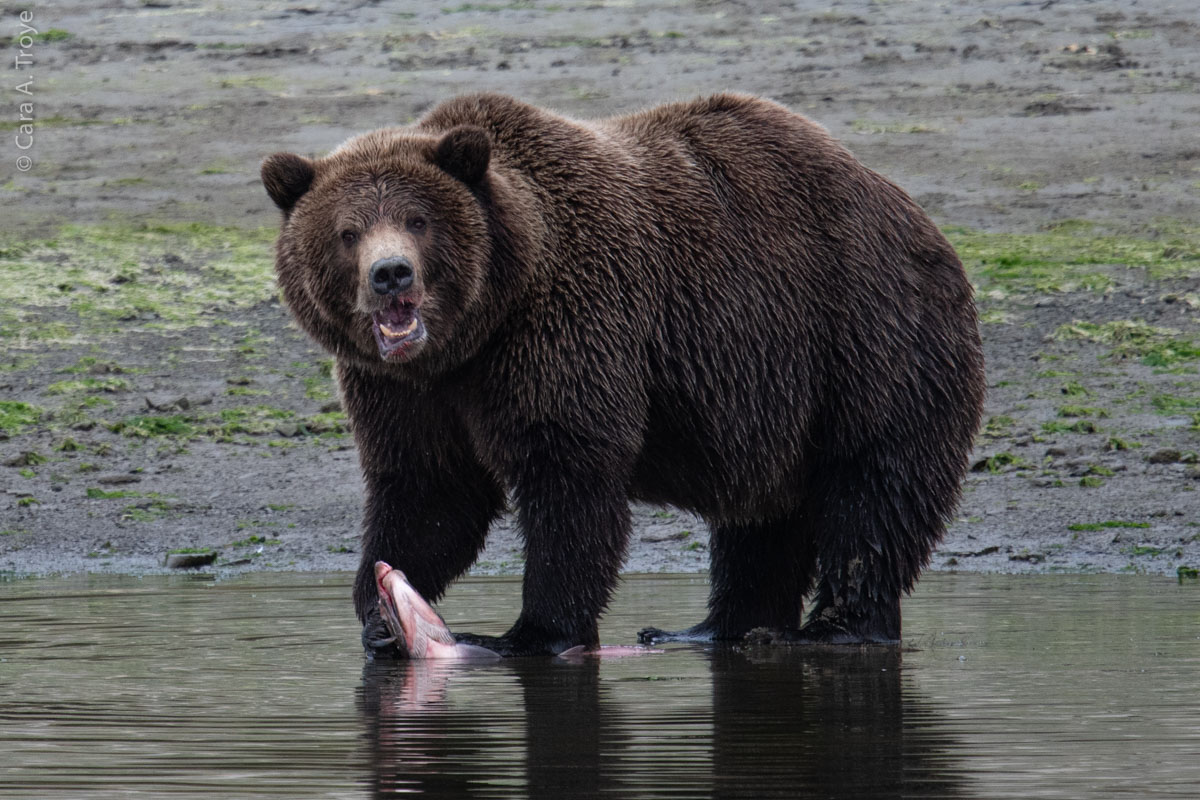
Not willing to share
By far, the most intense experience of the trek was coming across a huge male with a broken jaw, likely from a recent battle. His sheer size was overwhelming and I was instantly humbled. I stood in awe as he shifted from lying on his back in the river to standing and staring intently from the water’s edge – not something I will soon forget.
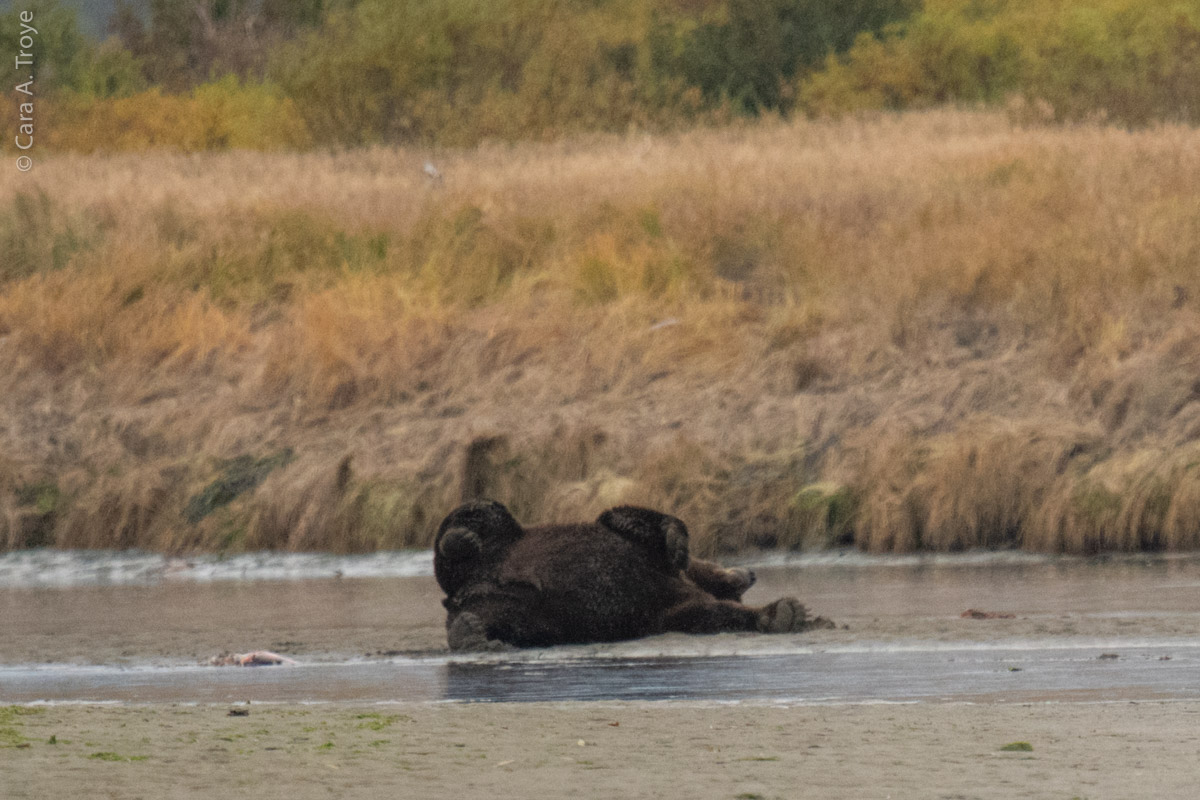
Check out the size of those paws
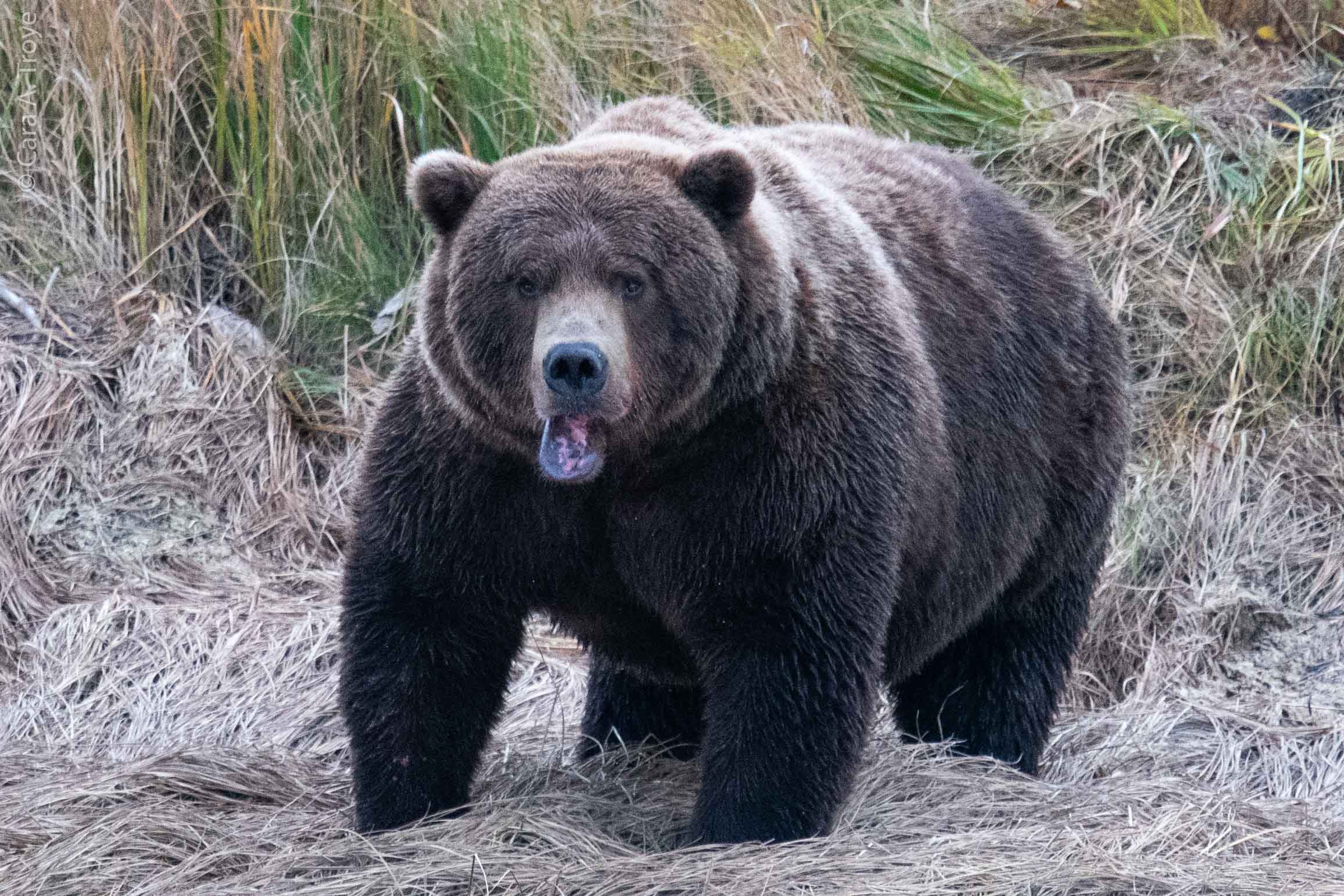
Broken jaw bear
Also memorable was seeing a mama bear teaching her cubs to fish in the river. The cubs spent more time playing with each other than actually catching fish though.
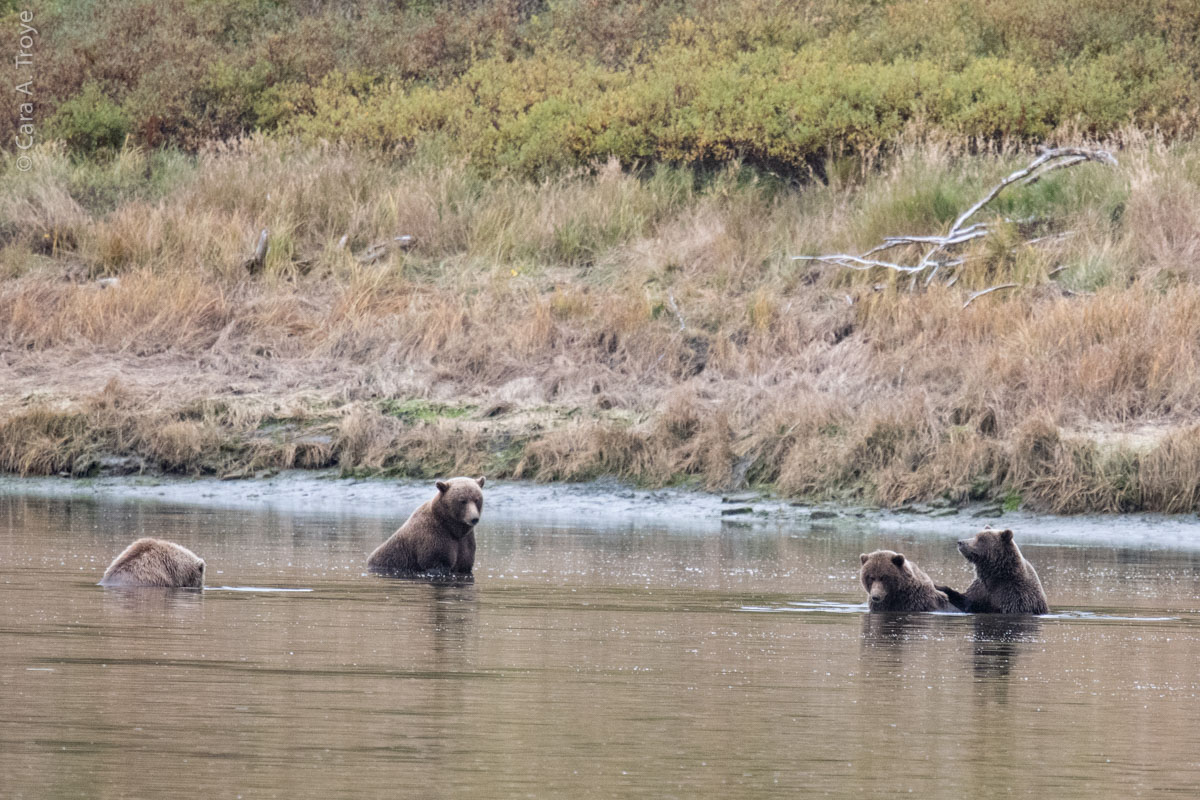
Cubs Learning to Fish with Mom
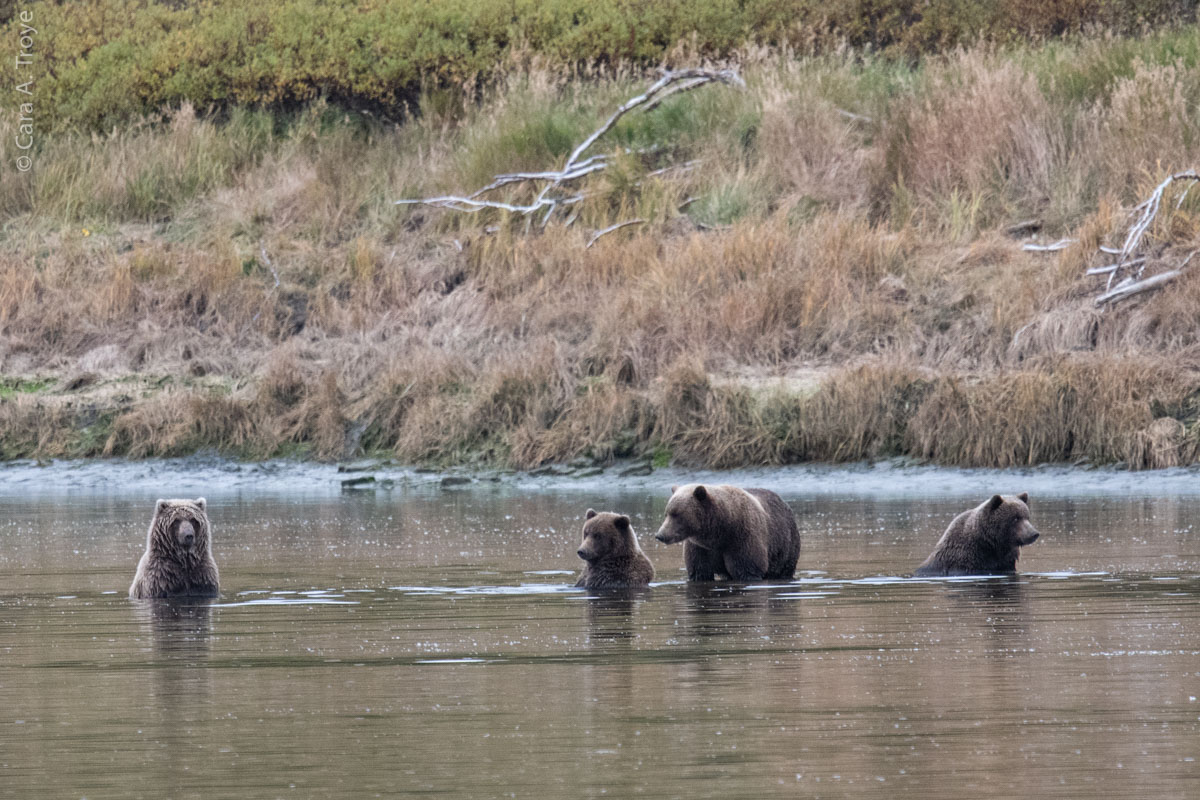
Still much to learn
Exploring – I enjoyed visiting some of Alaska’s smaller towns like Talkeetna which is along the Susitna River, at the base of Mount McKinley (also known as Denali). Talkeetna is a casual little town with one main street (and one parking meter that is conveniently broken) so it is a perfect place to relax. The town actually used to have a cat named Stubbs as its mayor. You can take a float plane ride in Talkeetna to see the views, but Mount McKinley is a fickle friend. It is best to keep your viewing expectations low because there can be significant cloud cover blocking its views.
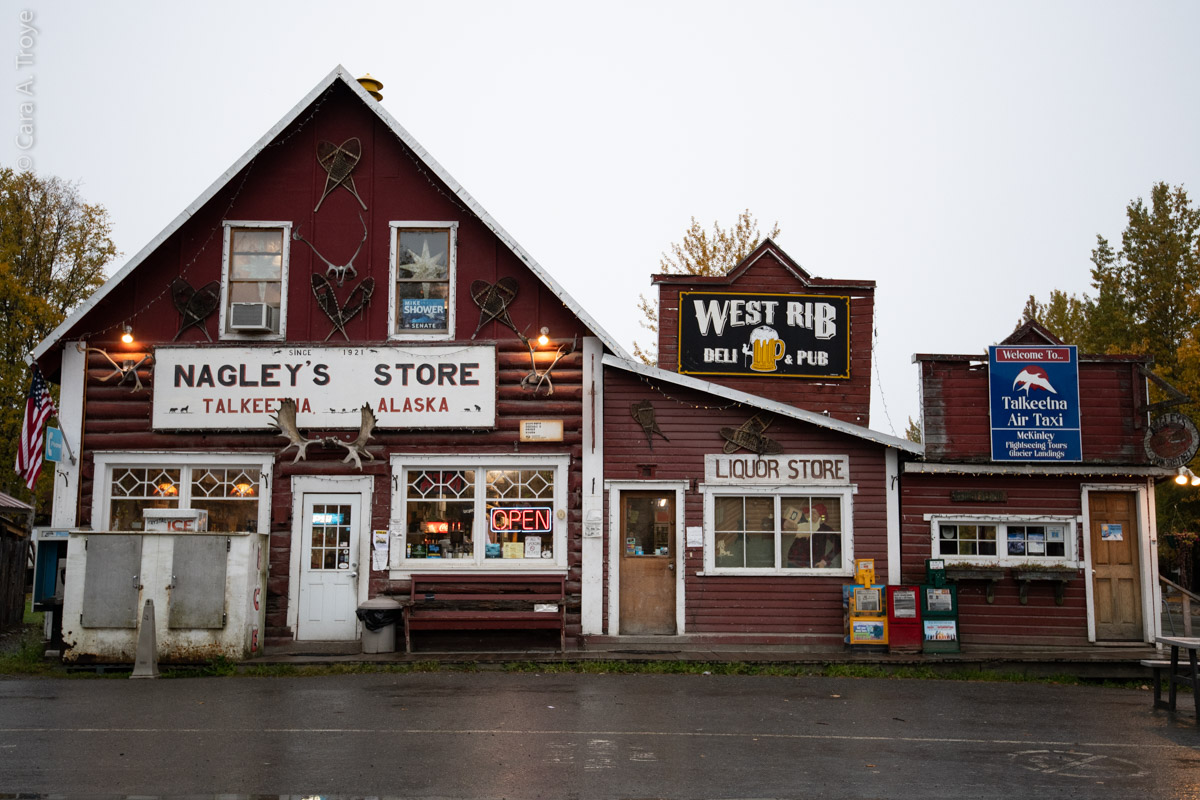
Downtown Talkeetna
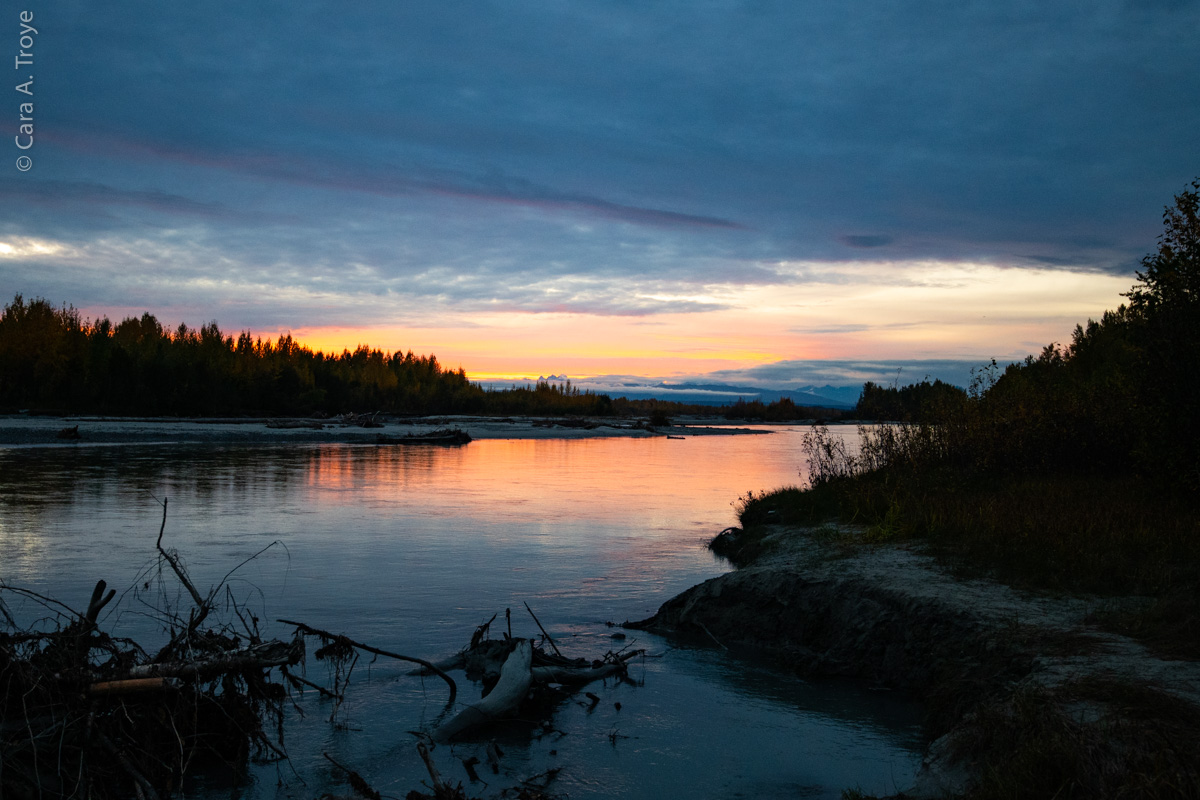
Sunset on Susitna River – Minimal View of Denali’s Range
Another one of my favorite small towns was Whittier, located in Prince William Sound next to Portage Glacier. Whittier is home to just over 200 people. You have to time your visit carefully since there is a 2.5 mile one-way tunnel used to enter and exit the town. The tunnel’s round-trip toll is ~$13 USD and it is also used by the train. At night, the tunnel closes so you either need to plan to stay the night in Whittier or leave before the tunnel closure. A lovely (but extremely windy) harbor awaits as your prize for surviving the tunnel and the fishermen regularly bring in their hauls of halibut. I had the most delicious bowl of fresh salmon chowder here. Keep an eye out for wildlife – I spotted seals in the harbor as well as bald eagles. At night, I felt as though I could reach up and touch the Big Dipper. The stars were so bright and seemed so close.
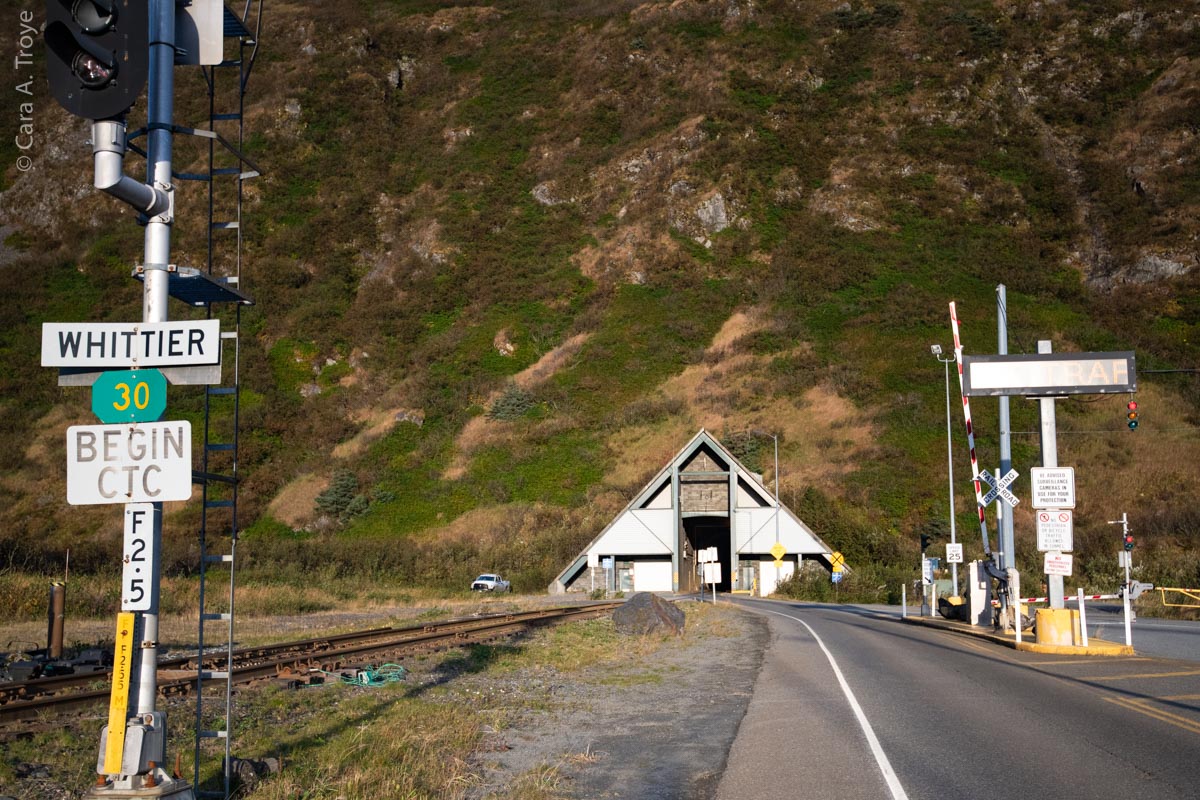
Whittier Tunnel
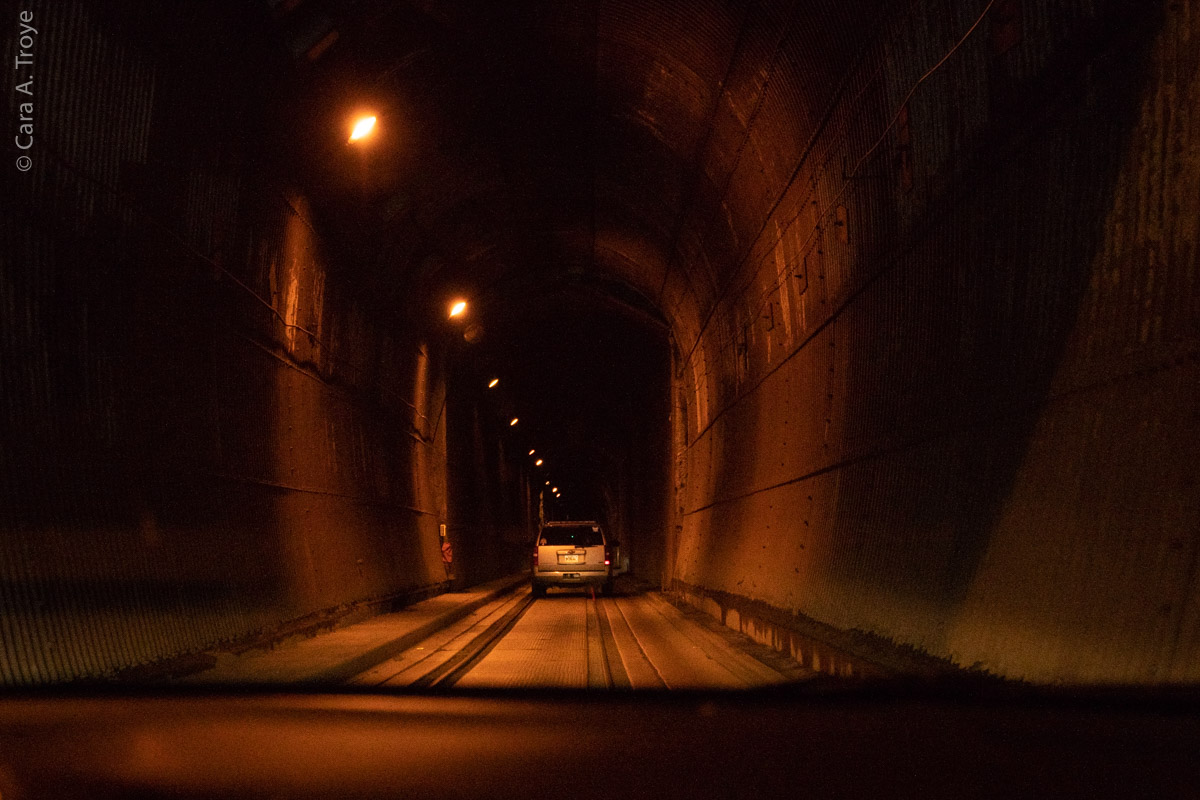
Inside the Tunnel to Whittier
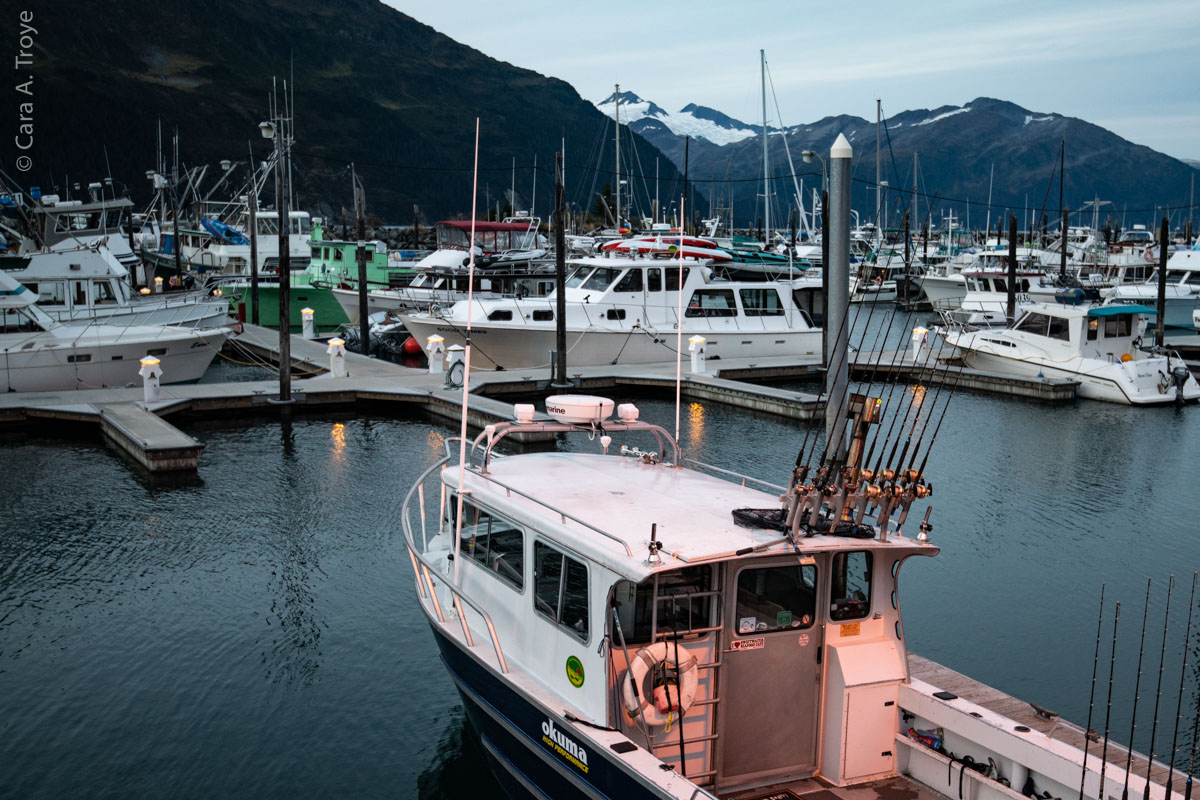
Whittier Harbor
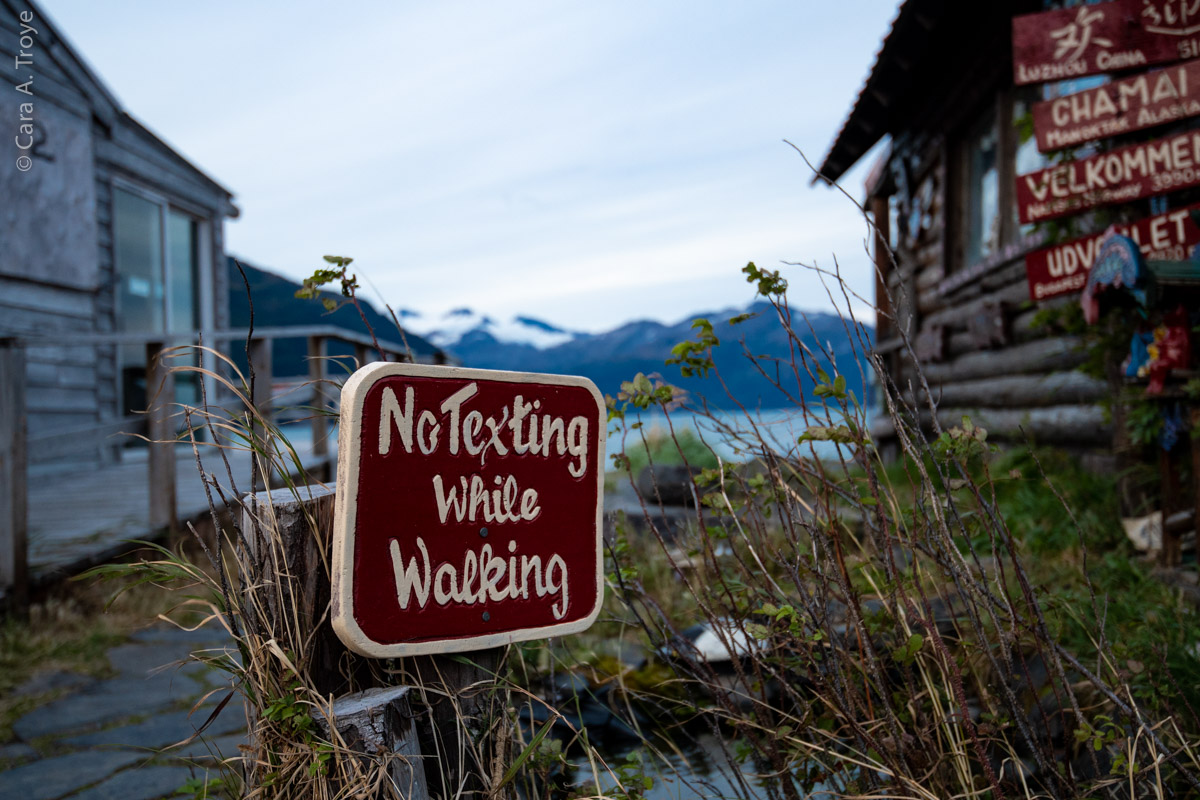
Prince William Sound
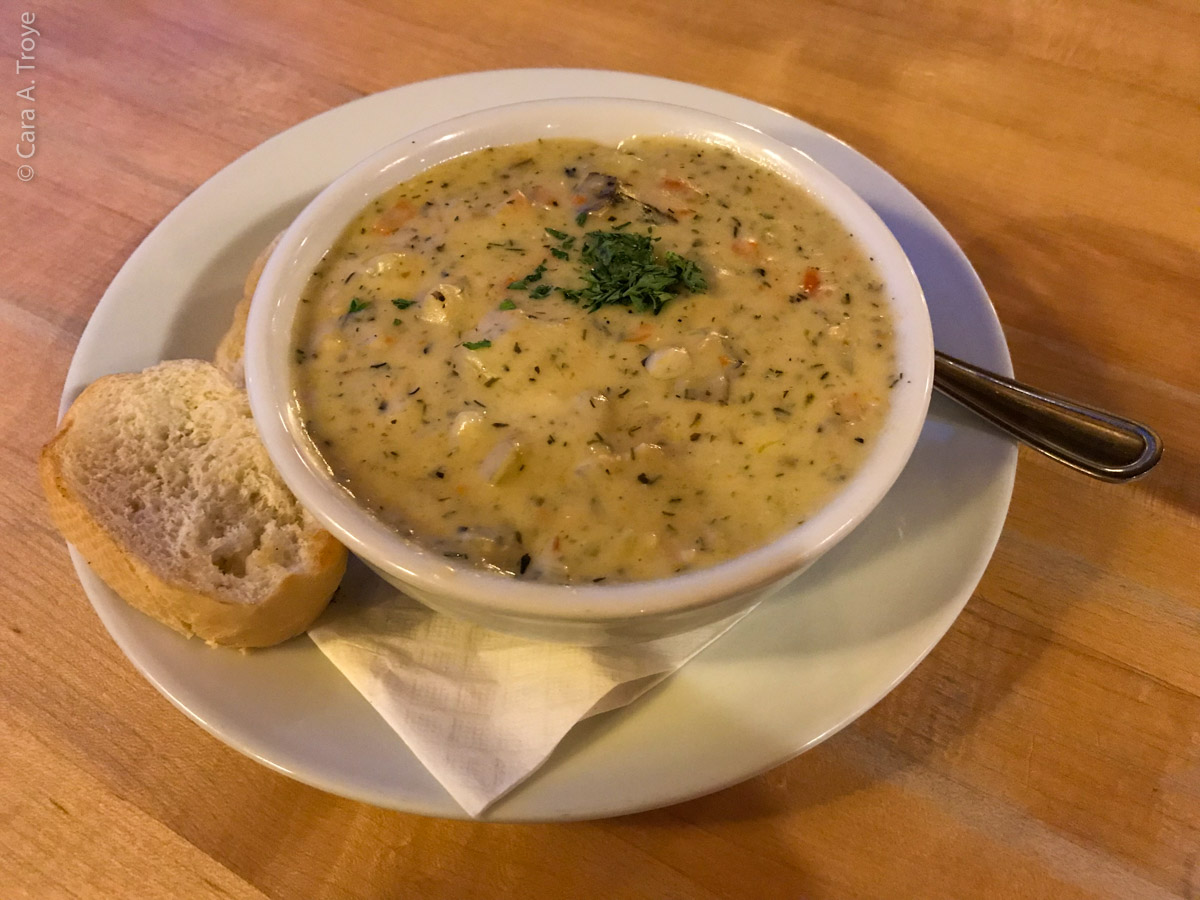
Salmon Chowder
Conservation – If you prefer to see wildlife in a sanctuary setting, you can visit Alaska Wildlife Conservation Center near Girdwood to learn about conservation, endangered species protection and animal rehabilitation. Some of their locals include caribou, moose, elk, wolves, lynx and bison. Alaskans are also proud to provide a home for several remaining musk ox with roots from the ice age. There is an educational musk ox farm near Palmer.
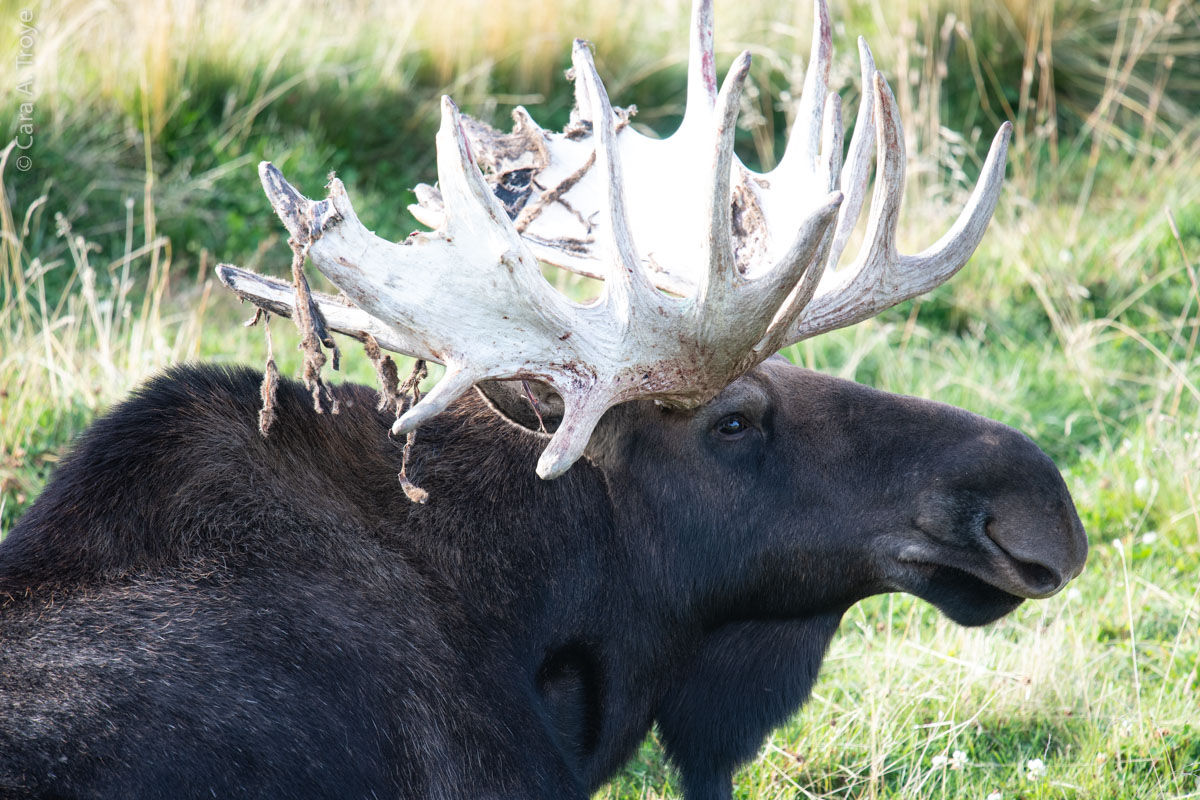
Moose at AWCC
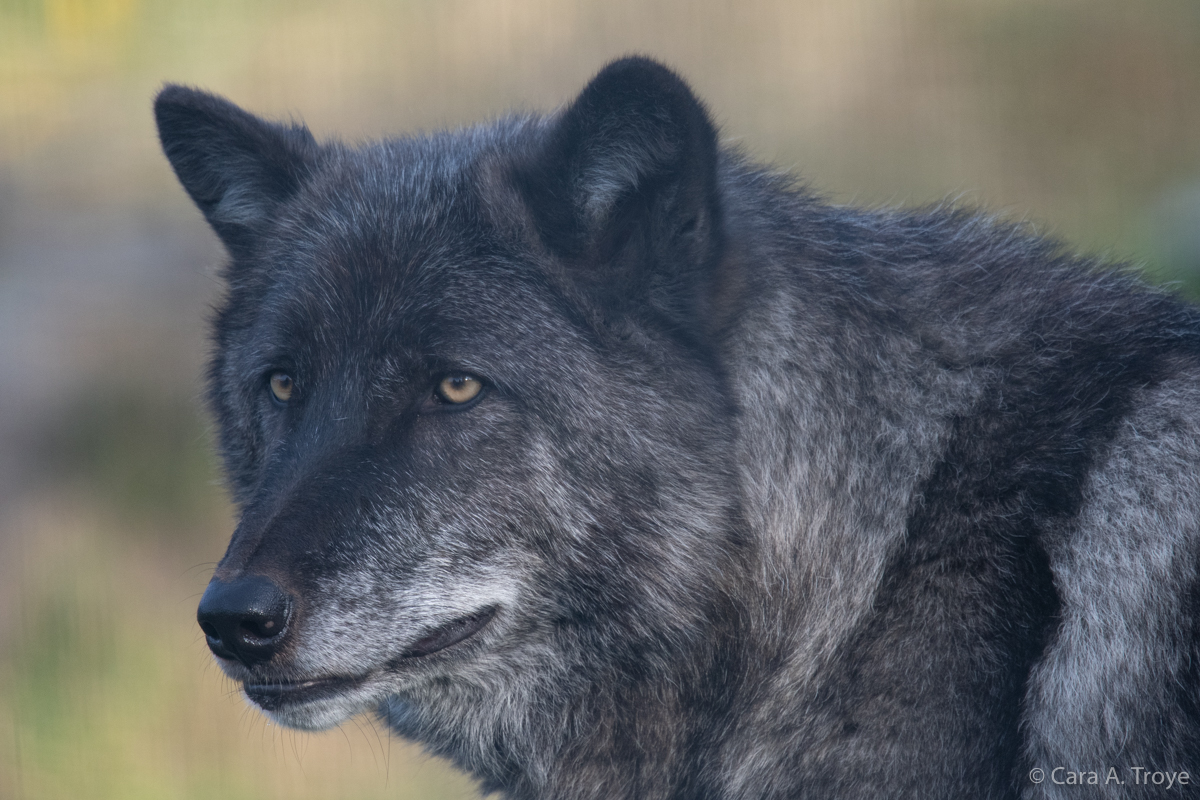
Wolf at AWCC
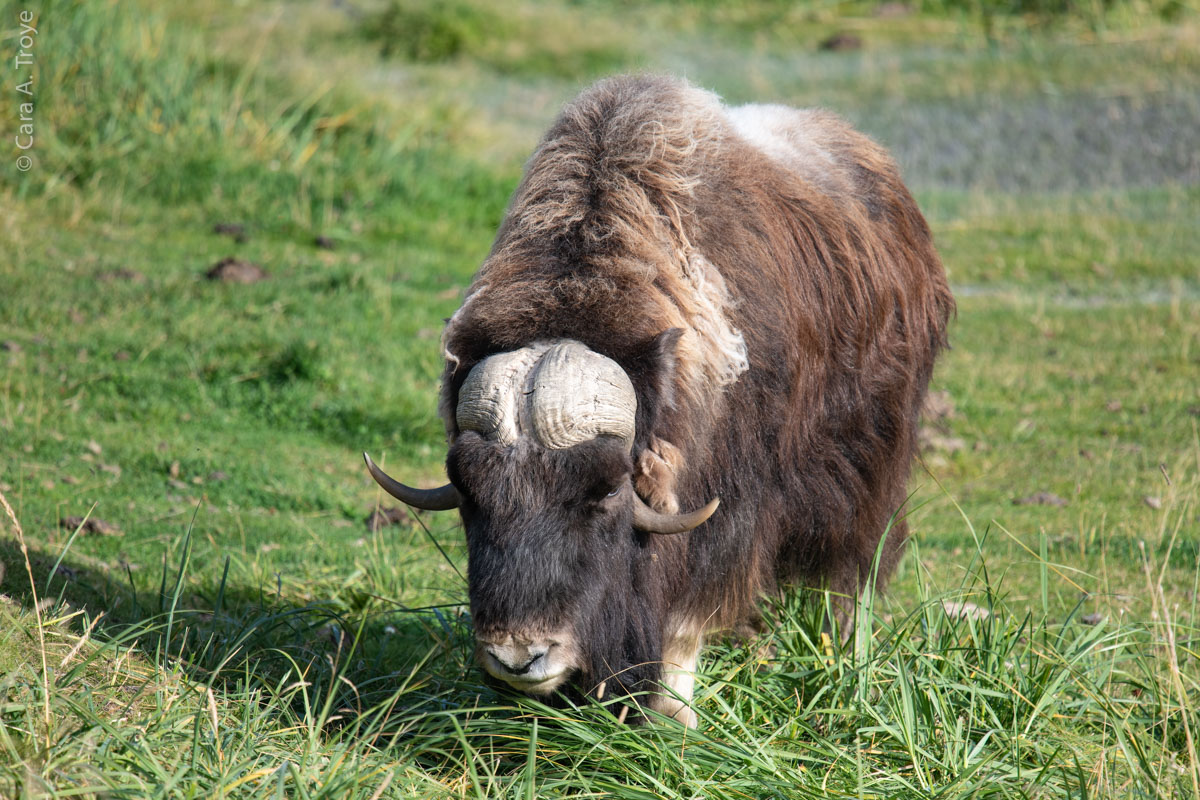
Musk Ox
Hiking – There are some great hiking trails in Girdwood. Check out Winner Creek Gorge Trailhead. You can park your car here and hike about 3 miles following the Lower Winner Creek trail to the base of Hotel Ayeleska and then turn around and hike back for a 6 mile round-trip. There are some areas of incline and varying terrain, but it is a very nice forest hike that almost feels magical. You even take a hand tram to cross over the gorge (often, someone on the other side will help pull the rope to help, just for fun). If you are up for something greater, you can also take a look at Upper Winner Creek Trail.
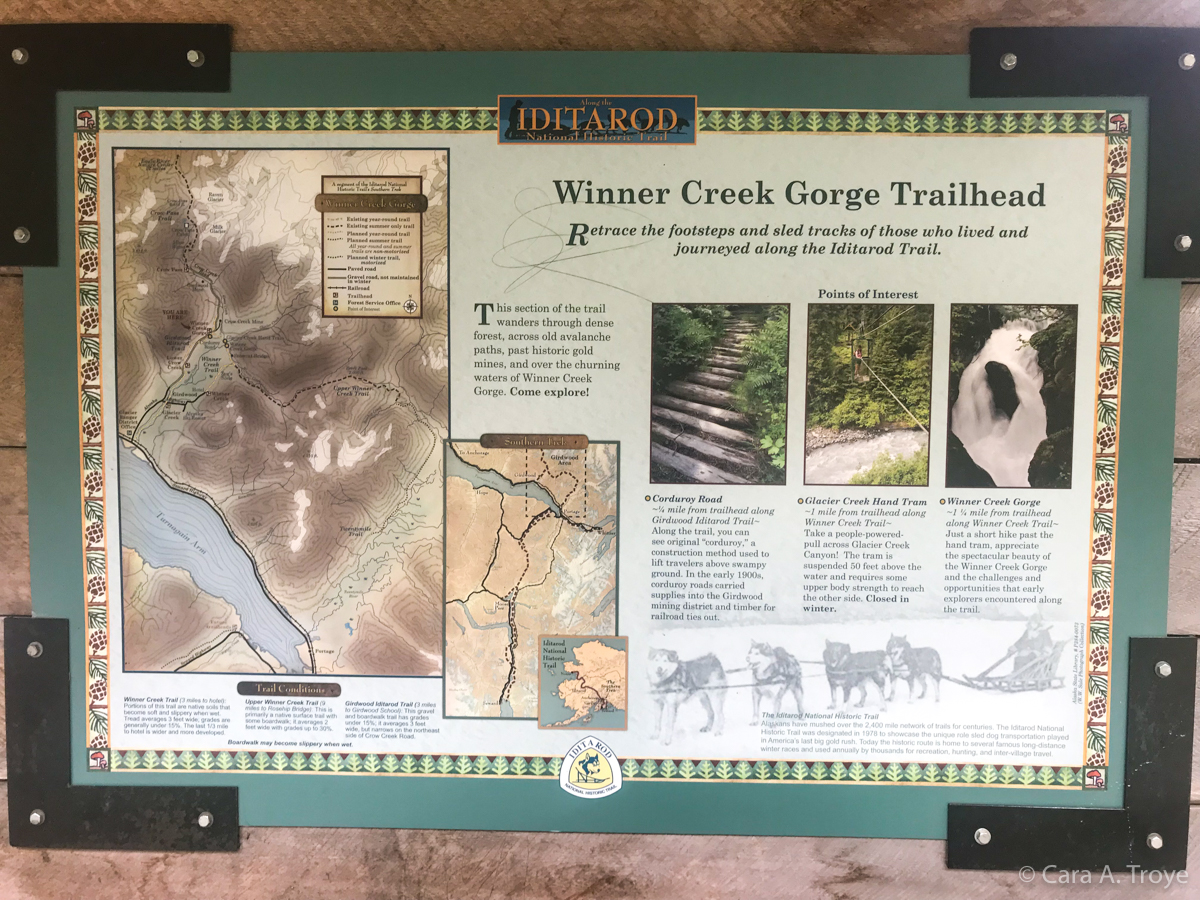
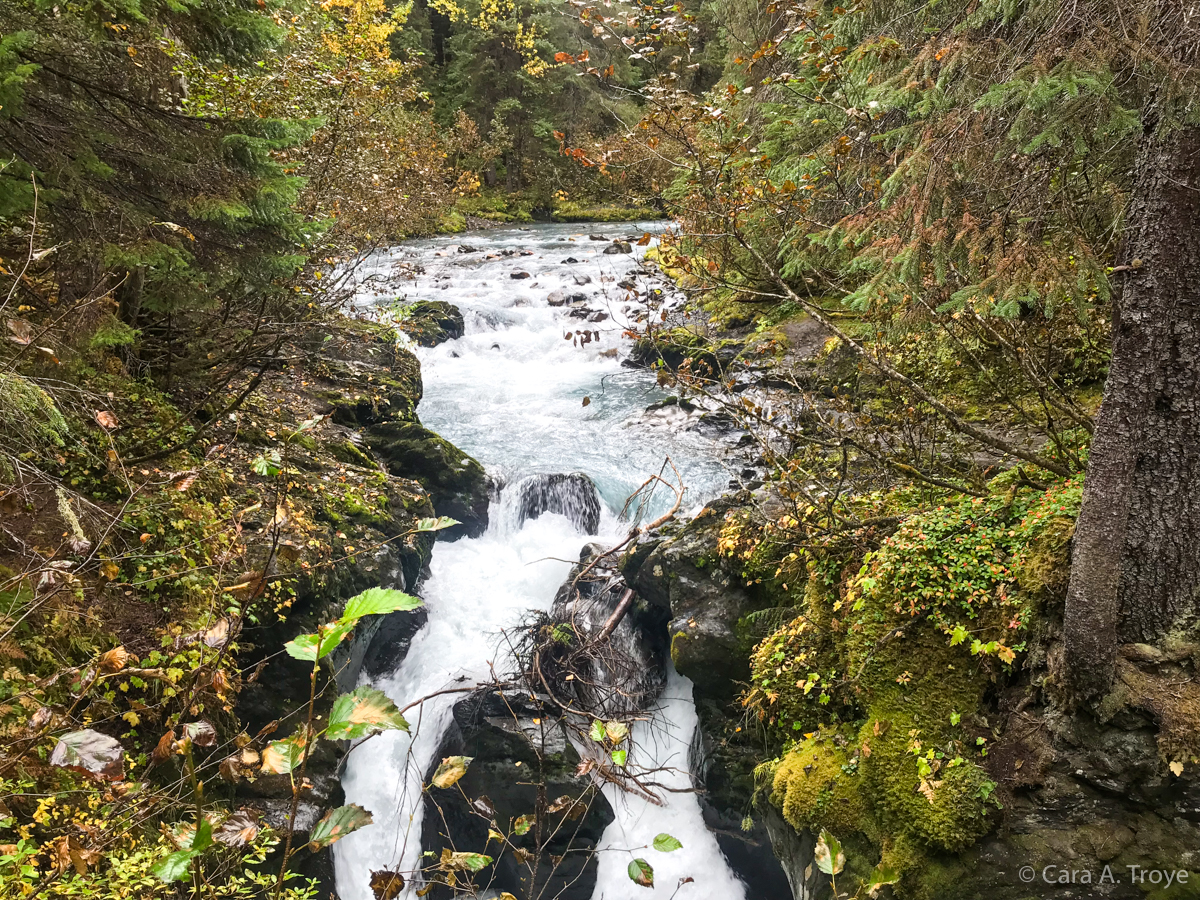
Winner Creek Gorge
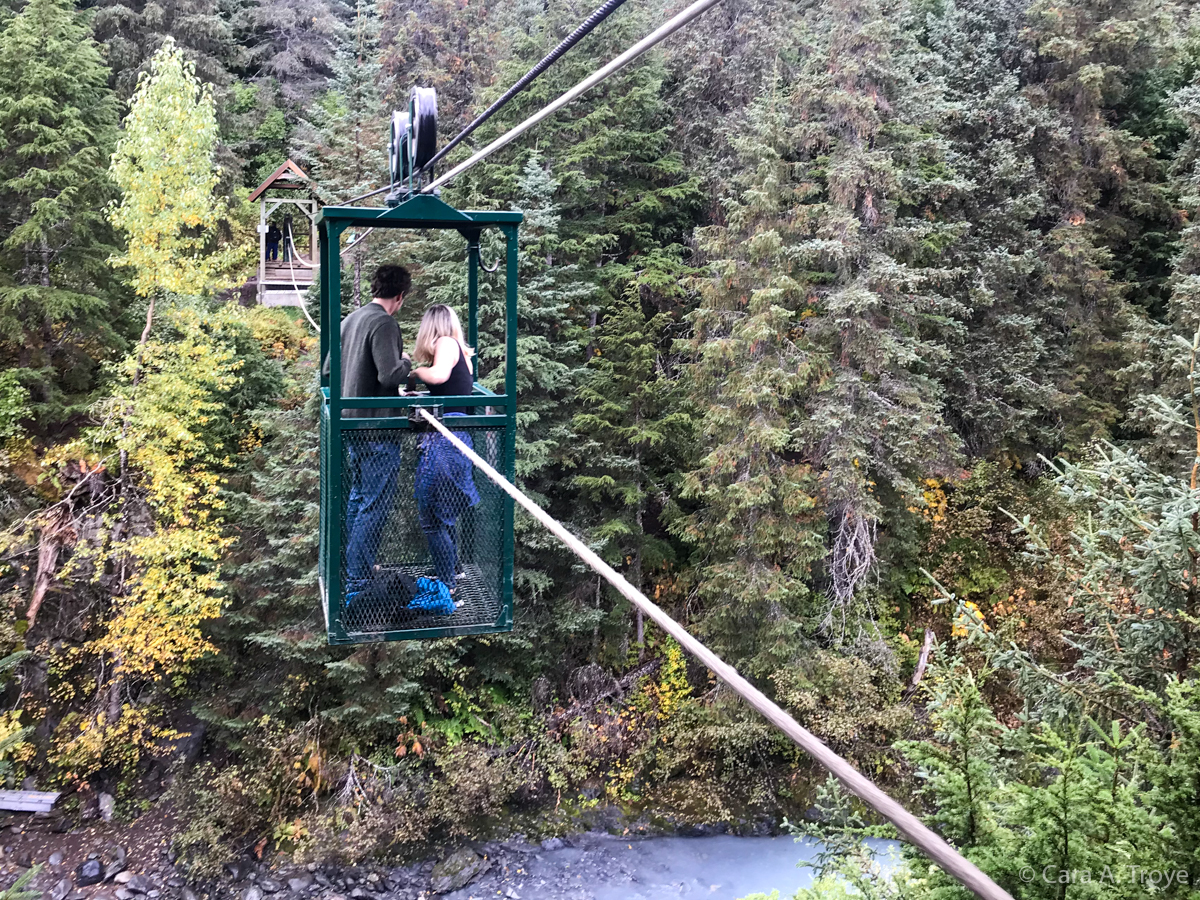
A couple cross the gorge by pulling the rope
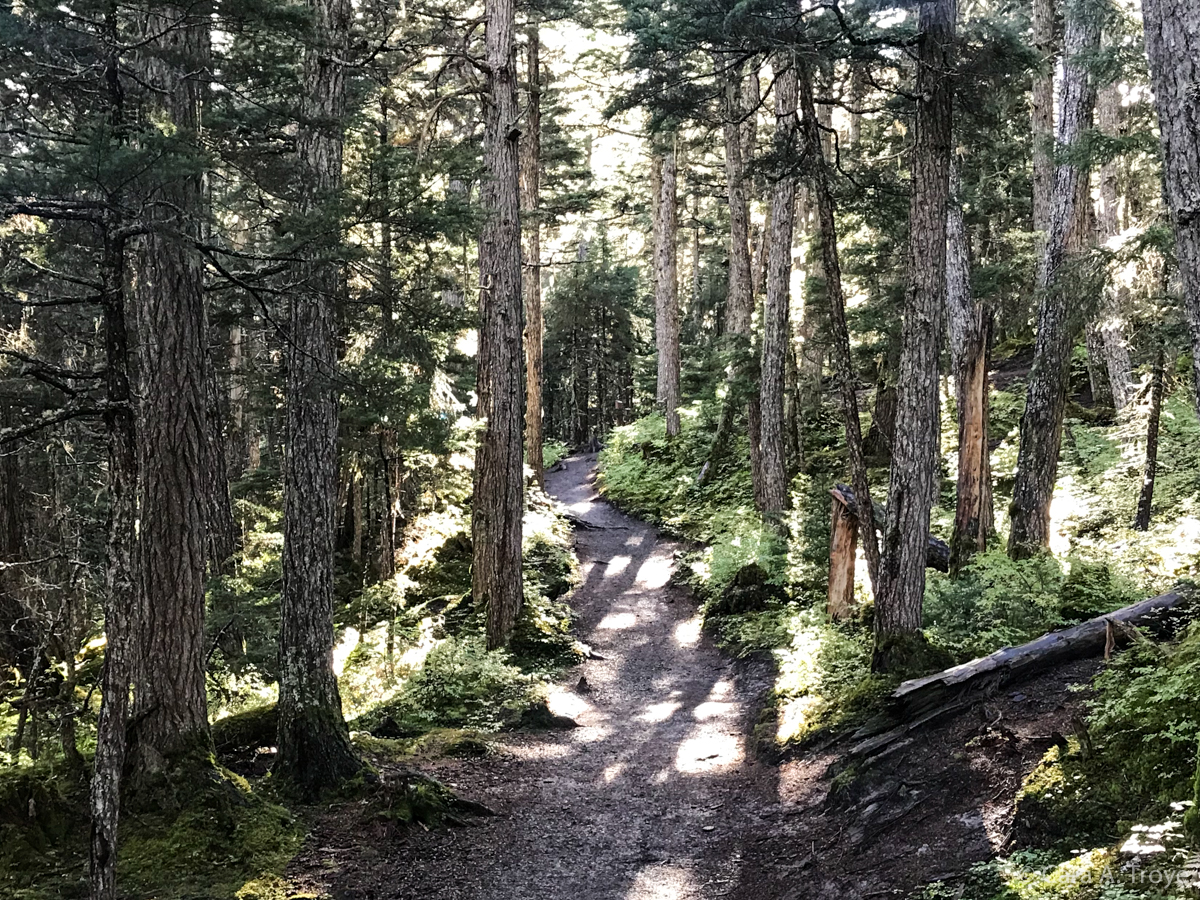
Part of the trail
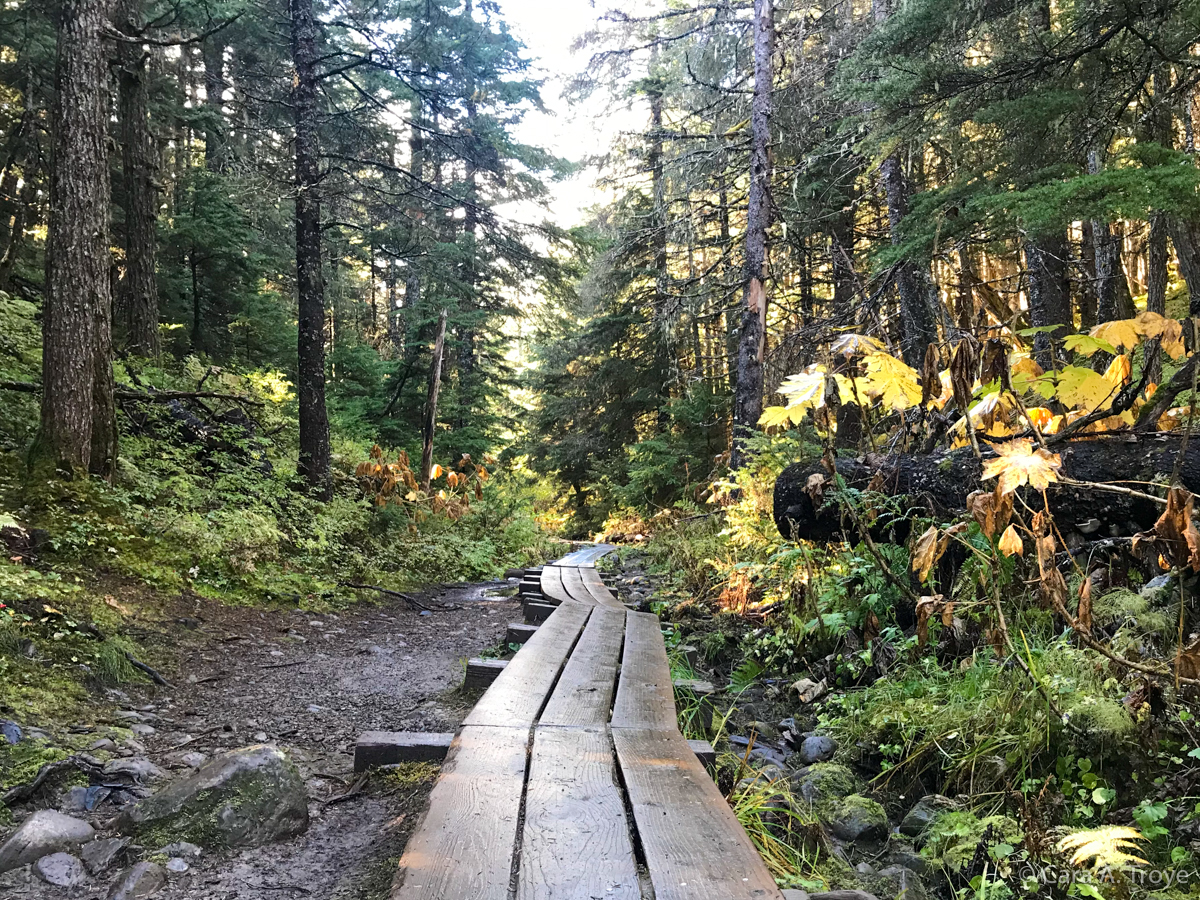
Boardwalk
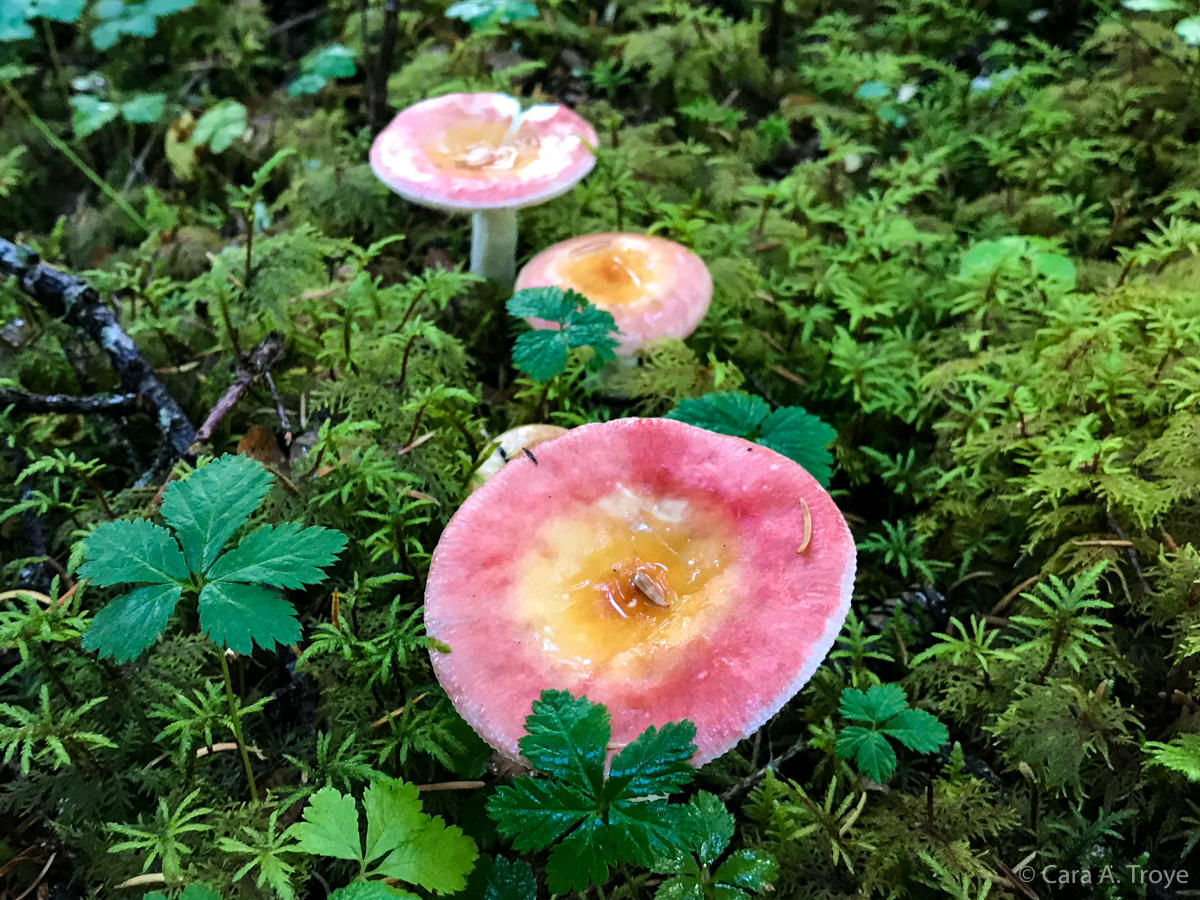
Wild mushrooms
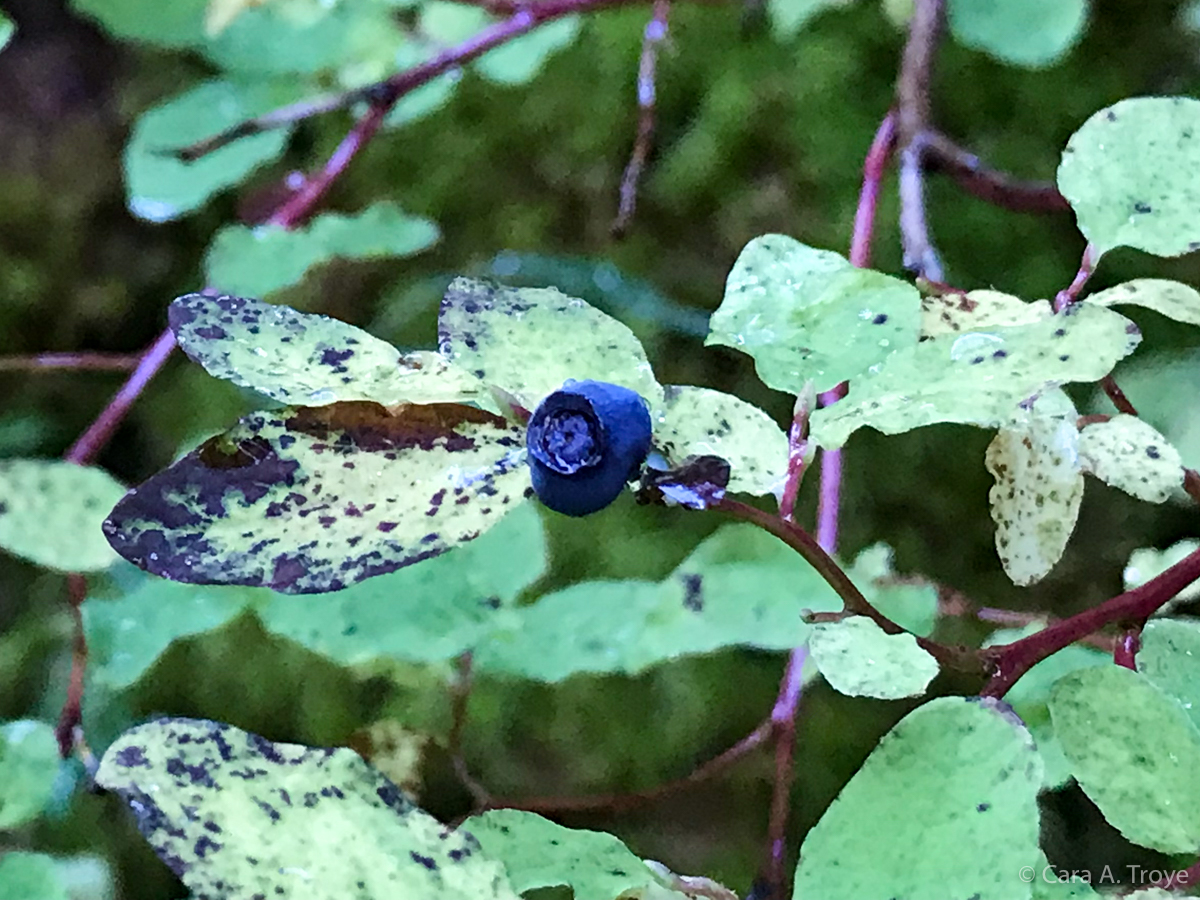
Wild blueberries
There is so much more to see and do in Alaska – this is just the beginning. I hope this inspires you to pack your bags, though, and head “North to the future!”
Travel Tips:
- If budget is limited, consider exploring Alaska during shoulder season and avoid the peak tourist season of summer. Airfare, rental cars and hotels are all much more reasonably priced in the off-peak season. For example, my direct flight to Anchorage cost me $11 USD plus a nominal amount of frequent flyer miles because my dates of travel were in September. You need to be more more comfortable with independent exploration during off-peak season since many of the tours will have ended, but if you prefer a more self directed experience with far fewer tourists, shoulder season might be a great option.
- Fall colors are gorgeous in Alaska. If you do not mind colder weather, winter can also be a great time to visit if you would like to try to see the Aurora Borealis or Northern Lights. You need a clear, very dark sky to see the light display.
- Foodies should absolutely try the fireweed ice cream – it is delicious!
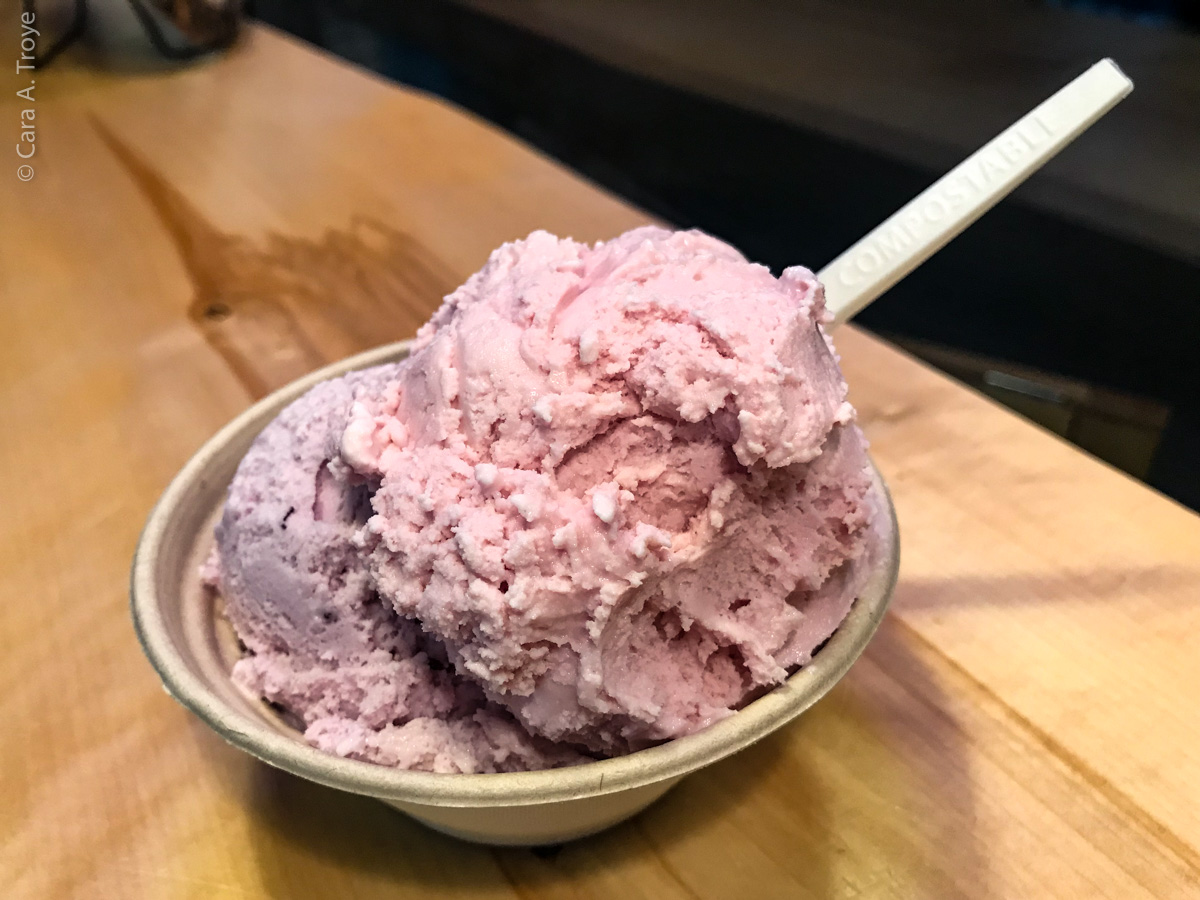
Fireweed Ice Cream in Anchorage
- Consider renting a car and to explore on your own. Roads in Alaska were fantastic when I went – easy to read signage, very regular rest stops available, accessible gas stations and grocery markets, etc. It is worth noting, though, that construction can cause delays for drivers, but still, the quality of roads was great.
- Some people rent camper vans to adventure more. There are numerous places to camp as well. Just do some research first to get to know the state rules and guidance for this style of travel.
- Everyone should review bear and moose safety practices before visiting Alaska to be prepared. Moose are supposedly very common to see especially near the airport and at Kincaid Park, but honestly, we did not see even one outside the conservation center. Apparently September is moose hunting season which has the moose hidden a bit more.
- If you visit Homer, be sure to venture down to the ship docks. I stumbled upon the Saga which is one of the crab boats from the television series Deadliest Catch. Captain Jake and his crew were docked between trips and it was so much fun to spend some time chatting with the crew and hearing some funny stories about the boat. Despite having been rained on that day and hiking 10 miles, I was not about to pass up a chance for a photograph with these legends.
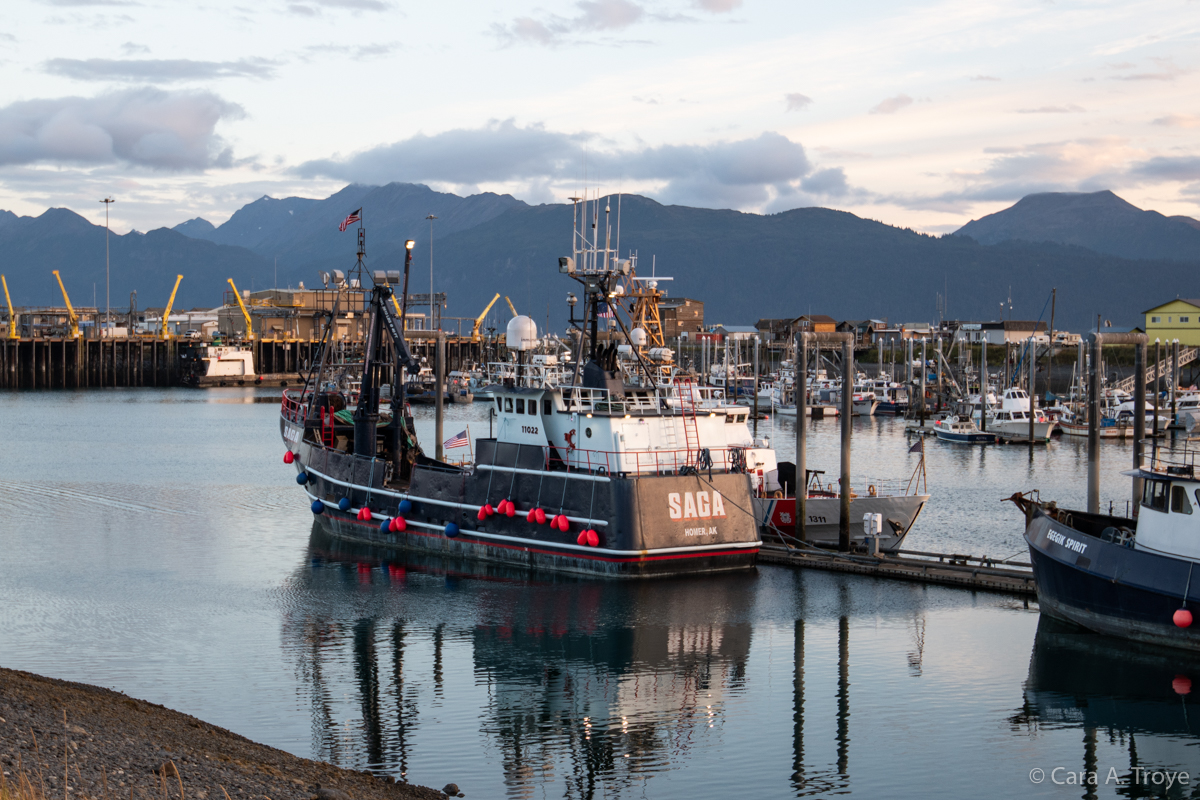
The Saga Crab Boat
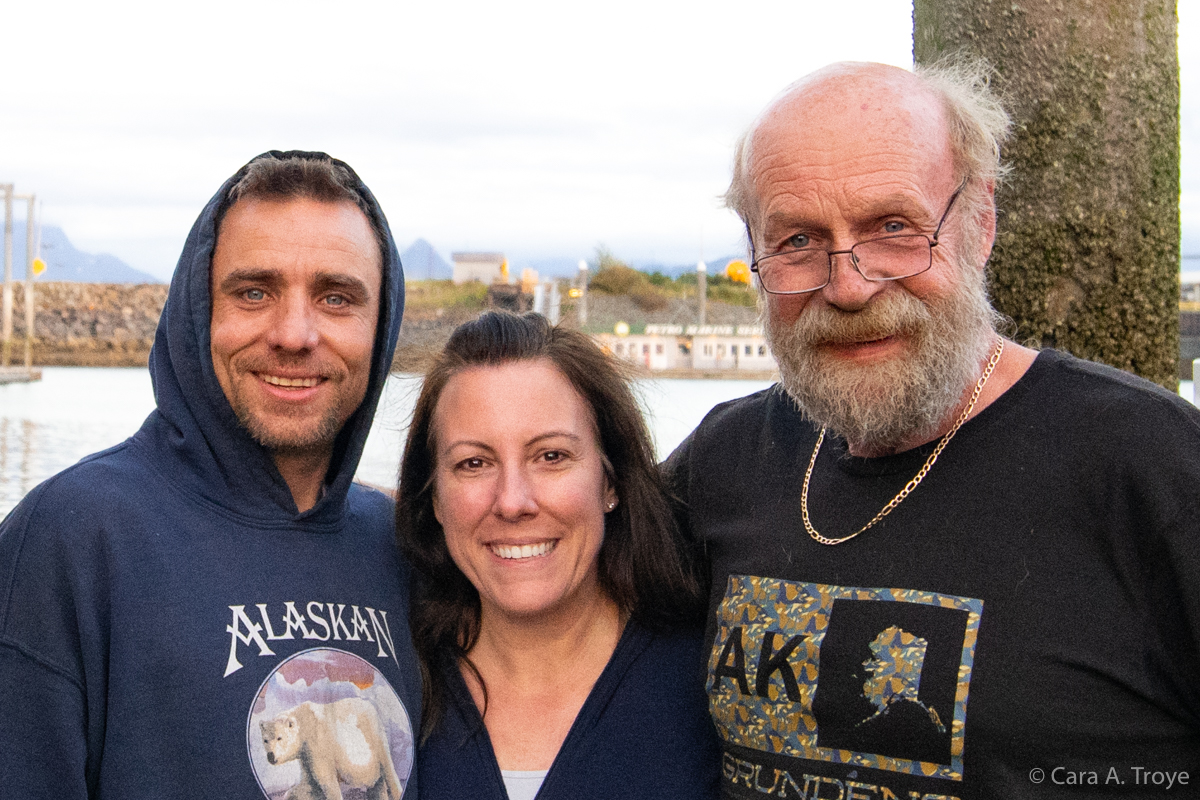
Captain Jake and Ole
